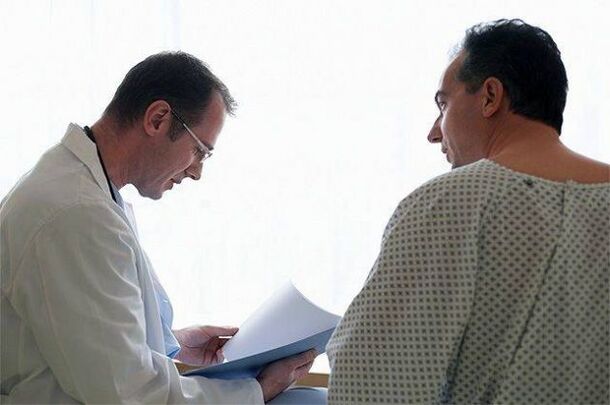
As a treatment for prostatitis, both pharmacological treatments (pills, suppositories, injections) and non-pharmacological treatments (massage, physiotherapy) can be used. There are at least 150 different drugs on the market that, according to manufacturers, help fight prostate inflammation. Those planning successful treatment require an initial consultation with a urologist.
Before using any composition, you should know all about it: what the drug contains, what is its pharmacological action, what are the indications and contraindications. It is also useful to learn from the experience of people who have already been in therapy and to get feedback from recovered patients.
What is the difference between drug release forms
With the prostate inflamed, the greatest danger is that the diseased microbiota will continue to spread in the male reproductive system. Without proper treatment, patients receive:
- epididymitis;
- balanoposthitis;
- Urethritis;
- Cystitis;
- Pyelonephritis.
Without testing, it is impossible to determine what causes prostatitis. Treatment should be based on the cause of the disease and only then will it be effective.
The main causes and treatment of prostatitis:
- Prostate tissue stagnation. Mild anti-inflammatory drugs are prescribed, antibiotics are not recommended. Good results can be achieved by stimulating the work of the blood and lymph vessels that supply the prostate.
- Bacterial infections. This is the most dangerous of all possible variants of the disease. Strong antibiotics are needed or the inflammatory process can spread through the urinary system and cover the urethra, bladder and kidneys. As the infection progresses in the reproductive system, the testicles and body of the penis are affected. Impotence, acute infectious prostatitis and acute pyelonephritis will also occur in the future. On an outpatient basis, patients receive antimicrobials and immunomodulators, while in a hospital setting, powerful immunostimulators and pathogen-specific targeted antibiotics are administered. Treatment is under the control of the test.
- Viral infection. Rare, requires immune system support. Medicine cannot provide any specific measures other than taking NSAIDs.
- Malignant and benign tumors, benign prostatic hyperplasia. In this case, the help of a surgeon may be required in addition to medication. After elimination of diffuse or nodular pathological processes, prostate status returns to normal.
Depending on the form of release, the following drugs for the treatment of prostatitis can be distinguished:
- injection. They are used in hospitals, and in severe cases, they help to quickly stop the inflammatory process in the prostate tissue.
- drip. The term refers to the introduction of drugs into the prostate through the lumen of the urethra. This procedure is usually performed by a urologist. Inject approximately 5 ml of drug by volume.
- Candle. The most common treatment at home, a very convenient and popular form of release. All types of prostatitis medicines are produced with candles: pain relievers, antiseptics, vasodilators, antibacterials, immune stimulants, etc. The course of suppository application should be from 5 to 21 days, and after the end of treatment, the patient must pass a control urine test.
- tablet. In some cases, oral medications with systemic effects are recommended. This form of release has the unconditional advantage: in prostatitis on the background of urogenital infections, several foci of the pathological process can be destroyed at the same time.
- Microperfusion. Classic treatment. It involves affecting the prostate through the wall of the rectum. This is a very safe and convenient method, the only downside is the initial emptying of the bowel. Therapeutic enemas are different from the usual ingredients and low doses.
- ointment. They are relatively rarely used to treat prostatitis due to their inconvenience in perineal application.
In the meantime, you can use different forms of drug releasers, such as tablets and suppositories. The choice of treatment strategy should be guided by the advice of the attending physician.
attention! Control testing should be done within 2 weeks of the last dose of the drug. Those without systemic treatment are at high risk for chronic prostatitis and impotence.
Most Popular and Cheapest Drugs
Drug prices vary widely across groups, and it's also important to consider where to buy the drug. At big chain pharmacies and online pharmacies, it's always cheaper than at smaller and lesser-known pharmacies.
fact! The doctor did not prescribe the specific name of the drug, he pointed to the active substance. A doctor's prescription is deciphered by a pharmacist. It is profitable for this specialist to sell expensive drugs, so patients should ask about cheaper analogs.
In addition, it is worth highlighting a class of drugs that treat prostatitis, such as alpha-blockers. The drug affects the hormonal processes that take place in the male reproductive system and helps to eliminate the preconditions for inflammation and swelling of the prostate. Because the drug can interfere with chemical reactions involving testosterone, it is necessary to check with an andrologist before use.
attention! There are many products that can decrease the effectiveness of alpha blockers.
Diet is a mandatory part of treatment, otherwise the results will be disappointing.
What do people say?

Those patients who were treated under analytical control and who consulted their doctors regularly believed that cheap drugs for prostatitis were as good as their more expensive counterparts.
Male, 39 years old
A friend recommended a well-known prostatitis composition. They complimented him a lot, they said he worked well, but somehow he didn't help me. No result at all. Maybe it's time for me to see a general urologist? Stop talking to friends.



























